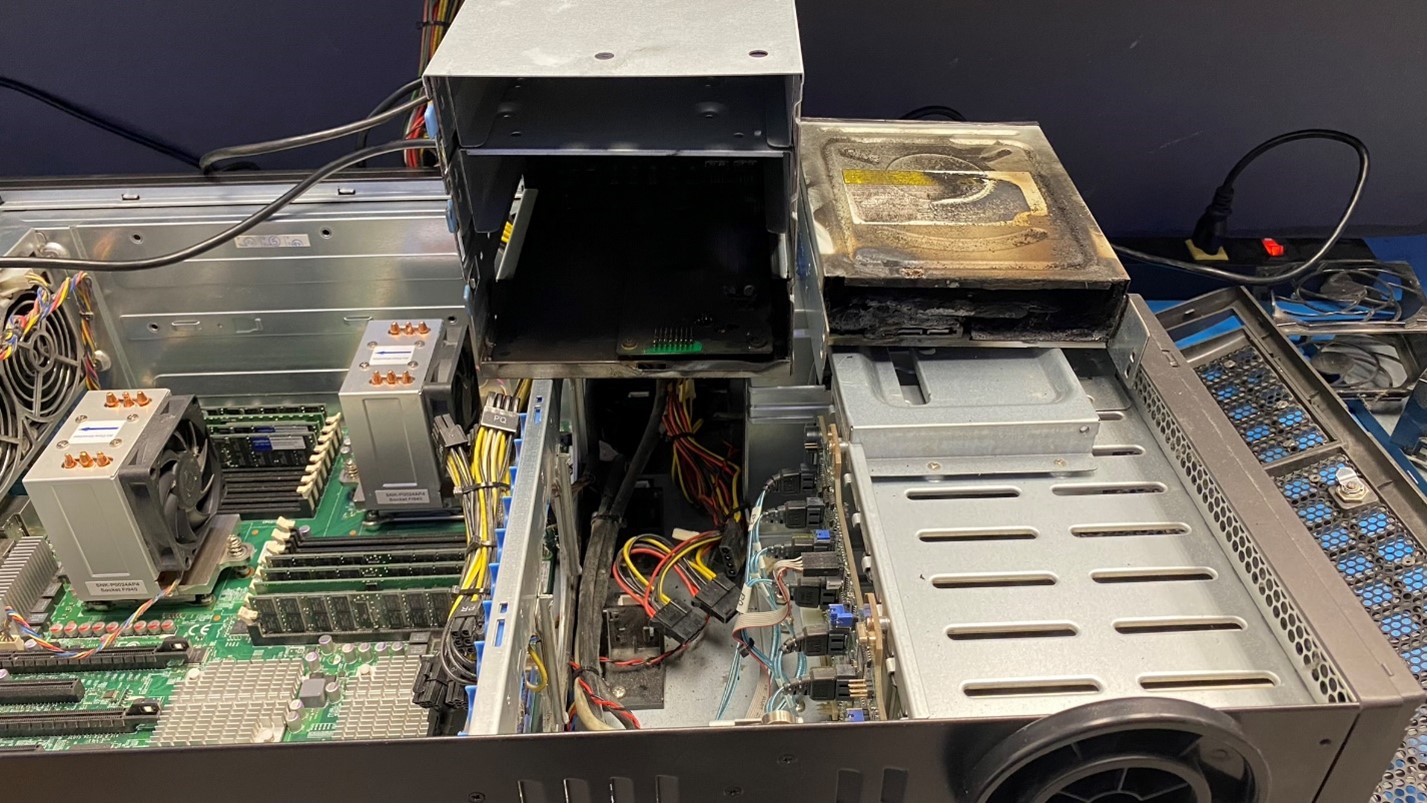
by Nathan Whittacre
In the eerie realm of IT services for small businesses, a bone-chilling incident unfolded that sent shivers down our spines. Picture this: a client’s server, long past its hardware lifecycle, went up in flames like a ghostly apparition. While this real-life horror story might sound like a Halloween fable, it serves as a haunting reminder of the importance of business continuity.
The Ghostly Server:
Once upon a midnight dreary, in a small office not far from here, an ancient server lingered on, its haunted presence sending chills down the spines of IT professionals. This server, with hardware dating back to a bygone era, had become a relic of the past, much like a long-forgotten tombstone.
The Warning Signs:
Just as in any classic horror tale, the signs were there, but they were ignored. The server groaned and creaked, plagued by constant performance issues and sporadic malfunctions. Our IT experts warned of its impending doom, suggesting replacement, but the business owners, entangled in the web of budget constraints and business decisions, chose to ignore the foreboding omens.
The Fiery Spectacle:
One ominous night, as the moon cast eerie shadows, the server’s wrath reached its peak. A spark ignited within its ancient hardware, engulfing it in flames that danced like malevolent spirits. The office was consumed by panic as smoke billowed and alarms wailed. It was a scene from a nightmare, but it was all too real.
The Cost of Neglect:
The aftermath was a ghastly sight. The server, now a charred relic, had devoured crucial business data, leaving the company in a state of disarray. Valuable information and irreplaceable files were thought to be lost, like a cursed treasure buried deep within the crypt.
The Resurrection:
The heroes from the realm of light swept in to save the day. Restoring the lost data from backups and recovering critical information from the server, the client’s operations were restored. The vital computing power was stored in the cloud, saving the business from long-term downtime. Our heroes are humble servants of business owners, fighting in the nightmarish realm of the ghosts in the machines.
The Moral of the Story:
Our Halloween-themed tale serves as a spine-tingling reminder that dying servers, like restless spirits, can wreak havoc when ignored. In the world of IT, business continuity is your magical amulet against such nightmares. A well-thought-out disaster recovery plan, regular maintenance, and timely hardware upgrades are your best defense against the spectral server’s wrath.
As the chill of Halloween surrounds us, let the story of the “Dead Servers Tell No Tales” be a cautionary fable for businesses of all sizes. Don’t let outdated servers haunt your IT infrastructure. In the realm of IT, it’s always better to replace the aging hardware before it rises from the grave to haunt your organization. In doing so, you’ll ensure that your business remains unscathed, even in the darkest of IT storms.
The story above is a true event that recently happened and a familiar problem that we encounter when prospects come to us for help. One comment we often hear from small-business owners when talking about business continuity is that they have backups, so they don’t need to do anything different to keep their business in operation during a disaster. That leads to the discussion about RPO, RTO, hardware lifecycle, and business continuity.
Recovery Point Objective (RPO):
- RPO defines the maximum tolerable data loss in the event of a disaster.
- It represents the point in time to which data must be recovered to resume business operations without significant loss.
- RPO is typically measured in minutes, hours, or days, depending on the business’s needs and data criticality.
- Achieving a low RPO requires more frequent data backups and real-time replication.
Recovery Time Objective (RTO):
- RTO specifies the maximum acceptable downtime for a system or application after a disruption.
- It represents the time it takes to recover a system and resume normal operations.
- RTO is usually measured in hours or minutes and varies based on business requirements.
- Achieving a low RTO demands efficient disaster recovery planning, rapid data recovery, and system restoration.
Difference between Backup and Business Continuity:
Backup:
- Backup is the process of copying and storing data to a separate location for safekeeping.
- Its primary purpose is data protection and recovery in case of data loss or corruption.
- Backups are essential for preserving data integrity but do not ensure continuous business operations.
- It primarily focuses on data recovery, not on system or application recovery.
- The time to recover from backups alone is often measured in days or weeks.
Business Continuity:
- Business continuity encompasses a broader strategy to maintain or quickly restore core business functions during and after a disaster.
- It involves not only data backup but also disaster recovery planning, redundant systems, and crisis management.
- Business continuity aims to ensure the organization’s overall resilience and continued operation in the face of disruptions.
- It addresses both data and system recovery and includes procedures for staff, communication, and facility recovery.
RPO and RTO are key metrics in disaster recovery and business continuity planning, helping organizations define data loss tolerance and acceptable downtime. Backups are a critical part of these plans, but business continuity encompasses a comprehensive approach to keep the business running smoothly during adverse events.
If you are unsure about how your business would survive a ghostly tale, reach out for a business technology assessment, and we’ll walk through what you can do to prevent a Halloween disaster.
